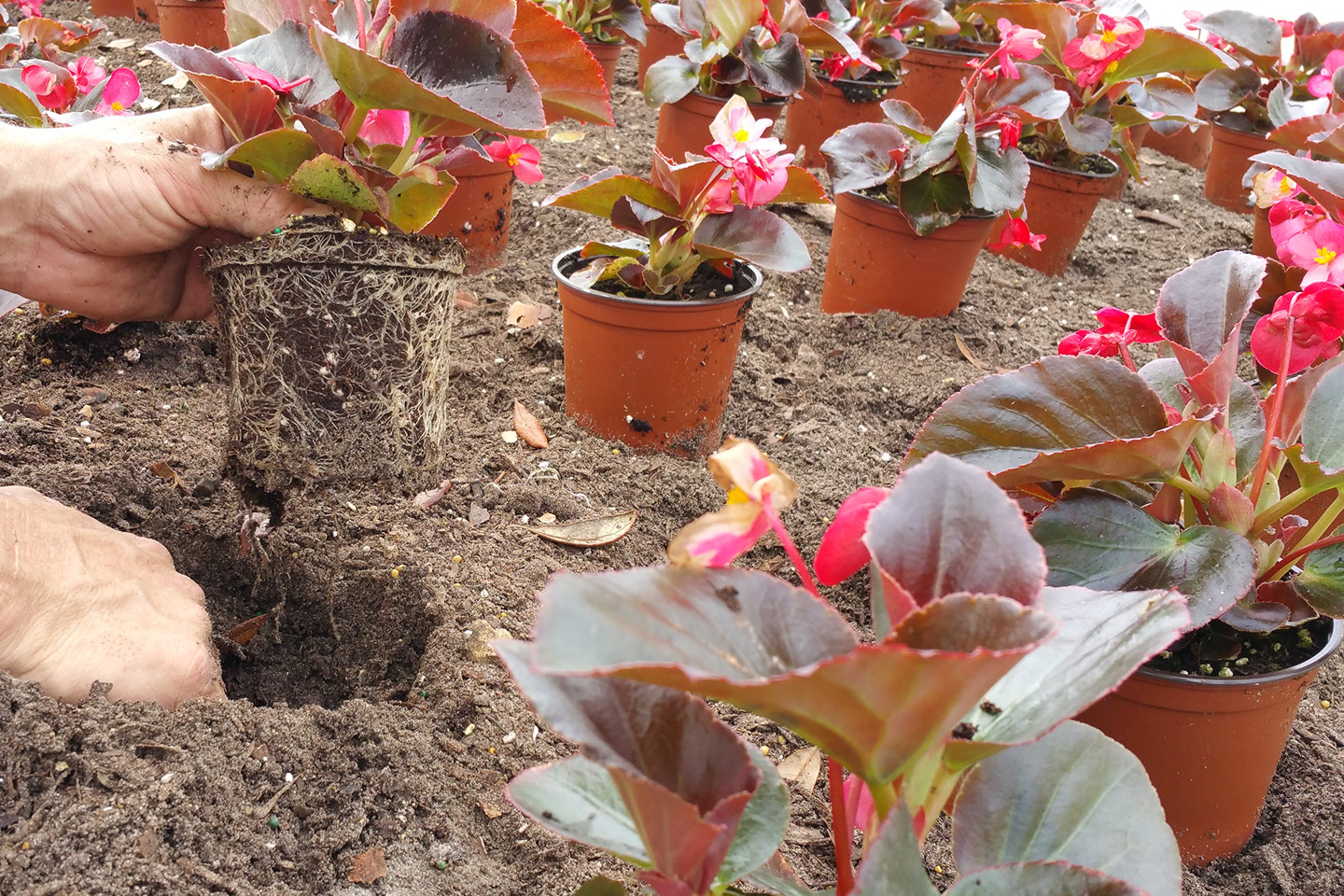Understanding Gophers, Moles and Voles in Florida Landscapes: Identification and Management - Sit Down with CEPRA
Have you ever wondered what causes those raised runways and the piles of soil in turf grass areas that seemingly pop up overnight and what creature or creatures are the cause of this?
Florida's diverse ecosystems support a variety of wildlife, including small burrowing mammals such as gophers, moles and voles. While these creatures play a role in the environment, they can also become a nuisance especially in turf grass areas. Understanding the difference between gophers, moles and voles, as well as effective management strategies, can help maintain a healthy and balanced landscape.
Gophers, moles and voles are frequently mistaken for one another, likely due to the similar types of underground burrowing damage that they cause in the landscape. One big difference between these lawn pests is the fact that gophers and voles are rodents and moles are not.
Florida is home to the Southeastern Pocket Gopher (Geomys pinetis) which is found throughout the state in field areas that have well drained soils, the Eastern Mole (Scalopus aquaticus) which are also commonly found in sandy soils. While the Woodland Vole (Microtus pinetorum) are not as abundant throughout the state and can be found primarily in the northern parts of Florida.
Identifying Gophers, Moles and Voles
Gophers
Size: 12 inches
Color: Varies from Gray to Brown
Gophers are medium sized rodents with fur lined pouches in their mouths. They have four large incisor teeth that are always exposed. They have short necks and strong forefeet with long claws for digging. Gophers have small eyes and ears; whiskers and thinly haired tails that help them navigate through their tunnels.

Gophers
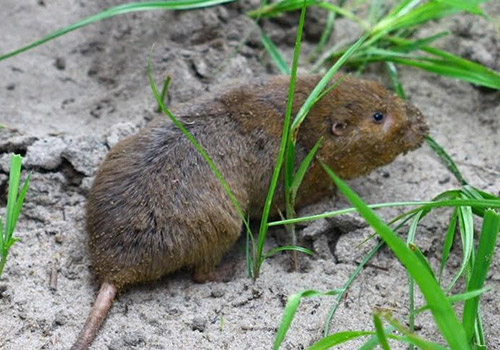
Gophers
Signs of Gophers in Your Landscape:
Gophers are most active during the Spring and the Fall. They will avoid rocky or swampy areas and prefer soil that is firm enough to maintain their tunnels. These rodents seldom venture above ground except to push the soil out of their tunnels. A Gophers burrow system consists of a main tunnel that is 4-18 inches below the soil surface with connecting lateral burrows. The mounds that they produce on the turf grass surface are typically 10-20 inches in diameter
- Large mounds of soil scattered over sizable areas
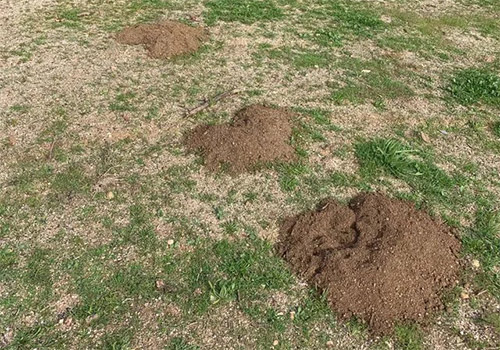
Gopher Mounds
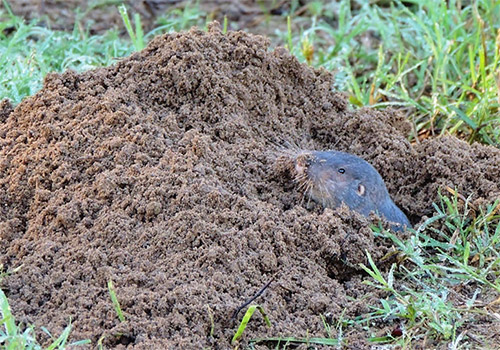
Gopher Mounds
Moles
Size: 4-7 inches
Color: Very Dark Gray or Brown
Moles are small, burrowing mammals with cylindrical bodies, velvety fur, with nearly invisible eyes and ears with large, paddle-like front paws adapted for digging. They are insectivores, primarily feeding on earthworms, grubs and other insects found in the soil. Moles burrow deep into the soil and create underground tunnels as they go.
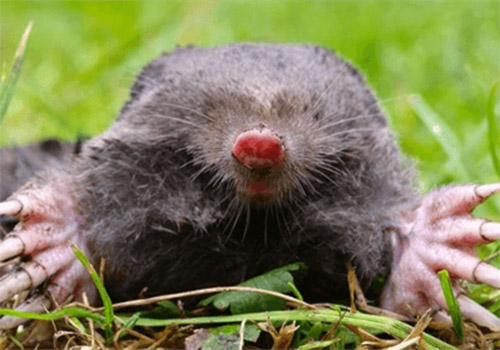
Mole
Signs of Moles in Your Landscape:
- Raised ridges and tunnels just beneath the soil surface
- Cone shaped mounds (molehills) appearing throughout the turf grass
- Disruption of plant and turf grass roots
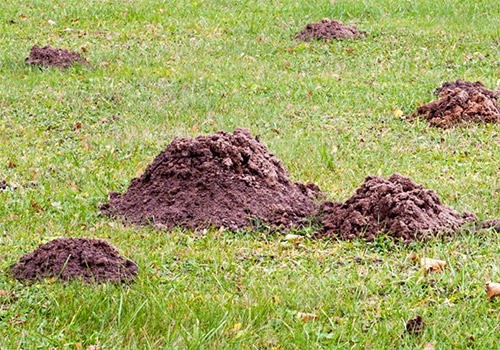
Mole Hills

Mole Hills
Voles
Size: 3-5 inches
Color: Light Gray or Chestnut Brown
Voles resemble mice but have stouter bodies, small, rounded ears, short tails and small eyes. Unlike moles, voles are herbivores that primarily feed on grasses, roots, bark and seeds.
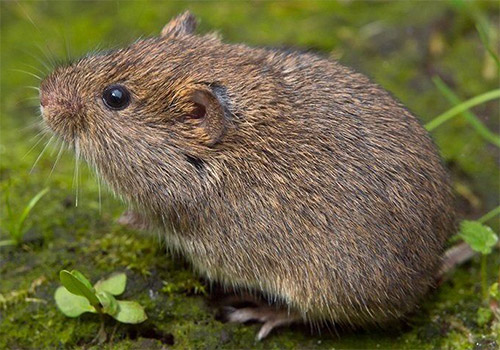
Vole
Signs of Voles in Your Landscape:
- Extensive tunneling systems and runways
- Gnawed bark at the base of trees and shrubs
- Gnawed bark at the base of trees and shrubs
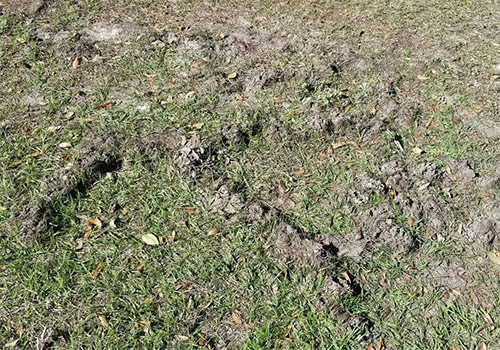
Vole Runways
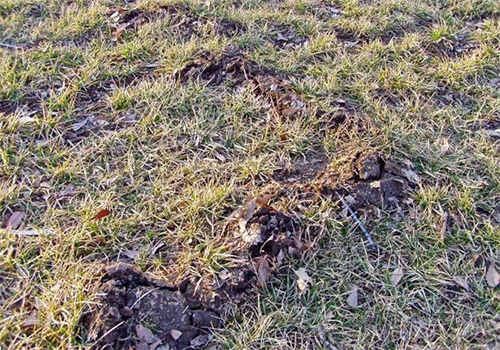
Vole Runways
Gopher Management Strategies Include:
The best time for management controls is early spring or late fall. You must monitor fresh mounds to know where the gophers are actively living and feeding to attempt control measures.
- Baits - Subsurface toxicant baits that have been approved by the Florida Department of Agriculture and Consumer Services cannot be broadcasted on the soil surface and must be applied into the main tunnels used for traveling and feeding.
- Trapping - Mechanical traps are an effective method of control.
Mole Management Strategies Include:
- Habitat Modification - Reduce water frequency to make the soil less attractive to earthworms and insects.
- Natural and Biological Control - Encourage natural predators like snakes, owls and foxes. Plant Mole-repelling vegetation such as Marigolds in the landscape.
- Trapping and Baiting - Use mole specific traps in active tunnels. Use mole bait with caution to avoid harming non-target animals.
- Repellents and Barriers - Use Castor Oil based repellents. Install underground barriers around garden beds.
Vole Management Strategies Include:
- Habitat Modification - Keep turf grass areas mowed and remove any dense vegetation where Voles can hide.
- Protective Barriers - Wrap tree trunks or hardware cloth to prevent gnawing. Install underground fencing around gardens.
- Trapping - Use baited snap traps along runways. Introduce barn owl nesting boxes to encourage natural predation.
- Repellents and Baits - Apply capsaicin-based repellents and use rodenticides with caution to minimize risks to pets and wildlife.
